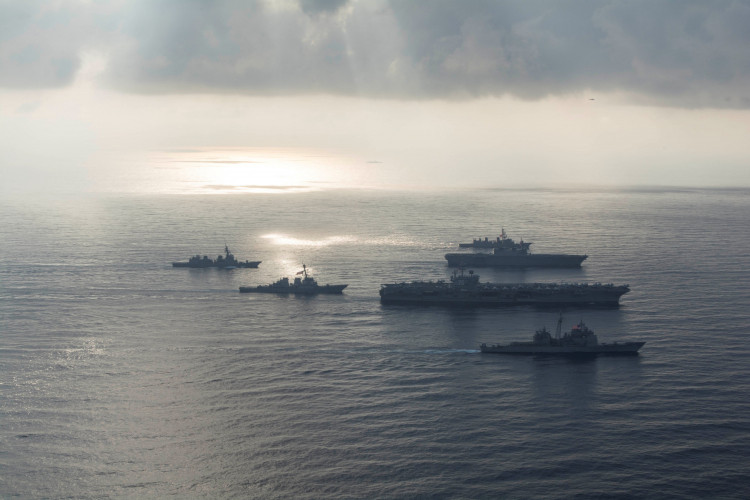The United States continues escalating its military power in the strategically vital Indo-Pacific region with a massive build-up meant to deter Chinese expansionism, or to quickly defeat China in the short but brutal naval and air battles foreseen by the Americans.
This steady build-up of American military power has become more apparent over the past few months despite the economic paralysis inflicted by the COVID-19 pandemic on the U.S. economy. China has exited the worst of the pandemic. On the other hand, the U.S. still has to contend with the reality it leads the world in number of confirmed cases (2.12 million) and deaths (117,000), as of Saturday morning in Asia.
The pandemic, however, has neither crippled American military power nor America's will to use that power to advance its interests in the vast Indo-Pacific region, which includes the Pacific and Indian Oceans.
For the first time in three years, three U.S. Navy nuclear-powered aircraft carriers and their carrier strike groups (CSGs) are patrolling Indo-Pacific waters. This intimidating massing of naval power comes is America's answer to perceptions among the People's Liberation Army (PLA) the pandemic has weakened the U.S. military to a point where China can push it around. There were confirmed COVID cases on several carriers and on other Navy warships.
Now patrolling Indo-Pacific waters are the CSGs of the USS Nimitz (CVN-68), USS Theodore Roosevelt (CVN-71) and USS Ronald Reagan (CVN-76). The carrier air wings of these supercarriers can together deploy more than 120 Northrop Grumman F/A-18 fighters of the latest models, normally the F/A-18 E/F Super Hornet.
"The ability to be present in a strong way is part of the competition," said Rear Adm. Stephen Koehler, director of operations at Indo-Pacific Command. "And as I always tell my guys here, you've got to be present to win when you're competing." Adm. Koehler pointed out aircraft carriers and CSGs are phenomenal symbols of American naval power.
"I really am pretty fired up that we've got three of them at the moment," he noted with pride.
Bonnie Glaser, director of the China Power Project at the Center for Strategic and International Studies, noted there have been indications in Chinese writings the U.S. was hit hard by COVID-19 resulting in low military preparedness. She sees the bolstering of U.S. military power in Asia as a signal to China it should not miscalculate. She also said the Chinese will definitely portray this as an example of U.S. provocations.
China remains America's top strategic military competitor in Asia and the world, as assessed by the U.S. national defense strategy. The U.S. Department of Defense continues to deploy more resources and military assets to the Indo-Pacific to battle counter China's military and economic expansionism.
The U.S. Air Force is also bolstering its presence in the Indo-Pacific. Its Rockwell B-1B Lancer strategic bombers are flying combat patrols out of Andersen Air Base, Guam in support of U.S. Indo-Pacific Command. The B-1s are focusing their missions over the disputed South China Sea, which China claims in its entirety.
The B-1Bs were deployed to the Indo-Pacific last May to conduct bomber task force operations out of Guam. Deployed to Guam is the 7th Bomb Wing from Dyess Air Force Base, Texas with its four B-1Bs and 200 personnel. The bombers are conducting strategic deterrence missions to protect the rules-based international order in the Indo-Pacific region.
The Air Force is also flying long-range reconnaissance missions with its remotely-piloted Northrop Grumman RQ-4 Global Hawk surveillance drones of the 319th Reconnaissance Wing Detachment 1. The daily missions ensure continuous operations that support the Indo-Pacific Command's recon requirements. The high-altitude drones were moved from Andersen Air Base to Yokota Air Base in Japan.
The Global Hawk's mission is to support U.S. intelligence, surveillance, and reconnaissance (ISR) collection capabilities and to support peacetime and combat operations.






